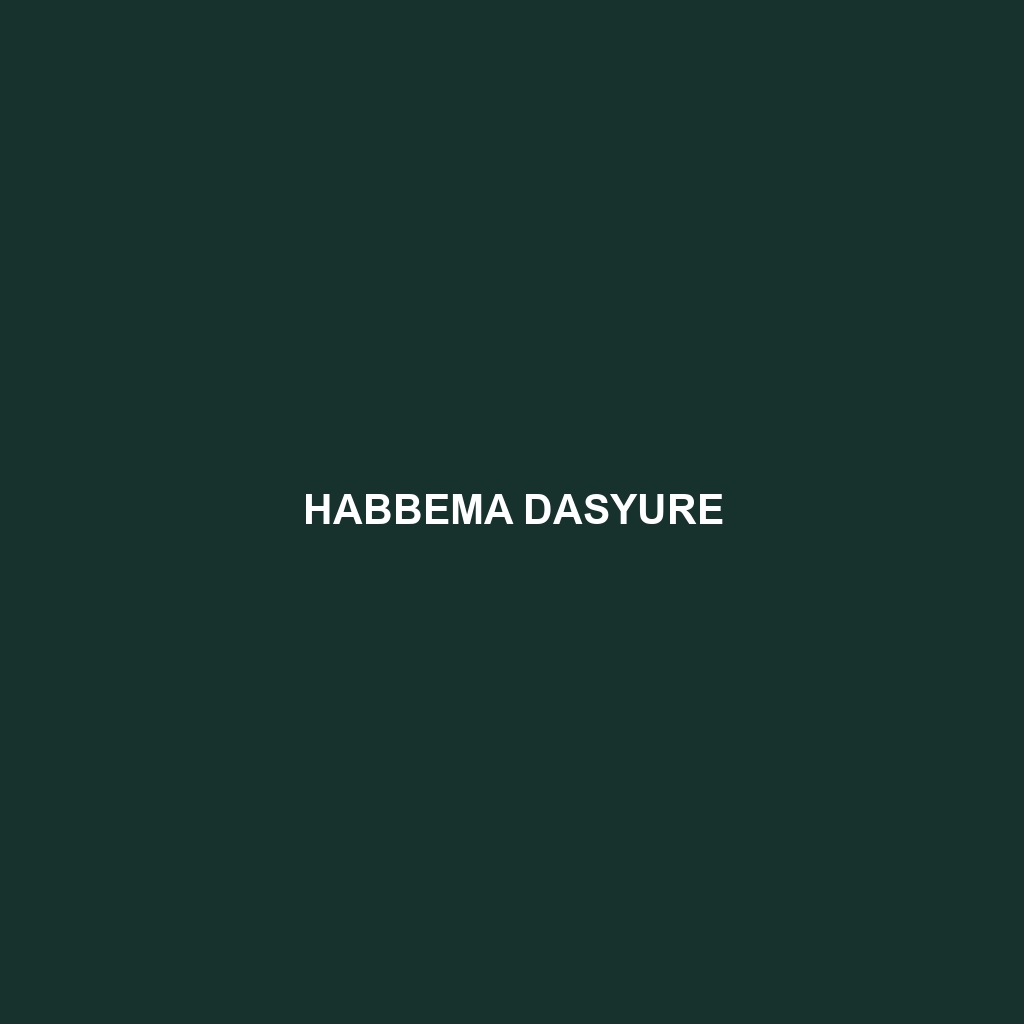Habbema Dasyure
The Habbema Dasyure (Neophascogale lorentzii) is a small, intriguing marsupial native to the high-altitude regions of New Guinea. Known for its elusive nature and remarkable adaptability to mountainous terrains, the Habbema Dasyure is a fascinating example of the biodiversity found in this unique ecosystem.
Physical Characteristics:
Size: The Habbema Dasyure is a small marsupial with adults typically measuring between 20 to 25 centimeters (8 to 10 inches) in body length, with an additional tail length of about 15 to 20 centimeters (6 to 8 inches). They generally weigh between 150 to 250 grams (5 to 9 ounces).
Coloration: This marsupial features a dense fur coat that varies in coloration from dark brown to grey. The underbelly is typically lighter, often a pale cream or off-white. The coloration provides excellent camouflage against the forest floor and rocky outcrops of their native habitat.
Special Features: The Habbema Dasyure has sharp, pointed teeth adapted for an insectivorous and carnivorous diet. Its keen sense of smell and sharp claws aid in foraging and hunting. The tail is prehensile, providing additional stability when navigating the rugged terrain.
Behaviors:
Social Interactions: Habbema Dasyures are generally solitary creatures except during the breeding season. They are territorial and use scent markings to delineate their territory. Interaction between individuals is minimal outside of mating periods.
Feeding Habits: These marsupials are primarily insectivores but are opportunistic feeders, consuming a variety of small invertebrates and occasionally small vertebrates. They use their acute sense of smell to locate prey buried under leaf litter or within crevices.
Ecological Roles: As insectivores, Habbema Dasyures play a significant role in controlling insect populations, contributing to the ecological balance within their habitat. Their predatory behavior also helps in maintaining the health of prey populations by preventing overpopulation.
Habitats:
Natural Habitat: The Habbema Dasyure is predominantly found in montane forests and alpine meadows of New Guinea, particularly in areas with altitudes ranging from 2,000 to 4,000 meters (6,500 to 13,000 feet). These environments provide the cool, moist conditions they prefer.
Adaptations: Adaptations to their high-altitude habitat include a thick fur coat to insulate against cooler temperatures and a highly efficient respiratory system to cope with lower oxygen levels.
Conservation Status:
Current Status: The Habbema Dasyure is currently listed as Near Threatened on the IUCN Red List. While not immediately at risk of extinction, their population is believed to be declining due to habitat loss and fragmentation, primarily driven by human activities such as logging and agricultural expansion.
Conservation Efforts: Efforts to conserve the Habbema Dasyure include habitat preservation and the establishment of protected areas within their natural range. Research into their ecology and behavior is crucial for developing effective conservation strategies.
Fun Facts:
1. Night Owl: The Habbema Dasyure is nocturnal, spending its nights actively hunting and foraging while resting in nests or burrows during the day.
2. Marsupial Marvel: Like all marsupials, females have a pouch where they carry and nurse their young until they are developed enough to survive outside.
3. Highlander: Their adaptation to high-altitude living makes them one of the few marsupial species thriving in such extreme environments.
The Habbema Dasyure is a remarkable testament to the adaptability and resilience of wildlife in New Guinea’s diverse ecosystems. Understanding and protecting this unique species is vital for maintaining the ecological richness of their high-altitude habitats.
